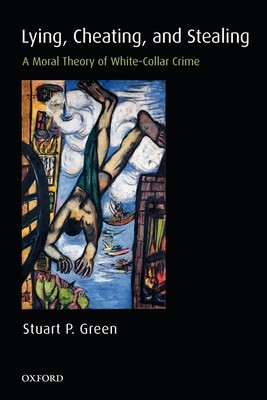
- We will send in 10–14 business days.
- Author: Stuart P Green
- Publisher: Oxford University Press, USA
- ISBN-10: 019922580X
- ISBN-13: 9780199225804
- Format: 15.9 x 23.3 x 1.7 cm, softcover
- Language: English
- SAVE -10% with code: EXTRA
Reviews
Description
The picture of crime that dominates the popular imagination is one of unambiguous wrong-doing - manifestly harmful acts that are clearly worthy of condemnation. The accompanying picture of the criminal - the thief, the murderer - is a picture of society's failures - to be cast out and re-integrated through a process of punishment and penance. Our understanding of white-collar crime, by contrast, is pervaded by moral and imaginative ambiguity. Such crimes are committed by society's success stories, by the rich and the powerful, and frequently have no visible victim at their root. The problem of marrying these disparate pictures has led to a confusion of the boundaries of white-collar crime. How is it possible to distinguish criminal fraud from mere lawful "puffing," tax evasion from "tax avoidance," insider trading from "savvy investing," obstruction of justice from "zealous advocacy," bribery from "log rolling," and extortion from "hard bargaining?" How should we, as scholars and
students, lawyers and judges, law enforcement officials and the general public, distinguish the lawful from the unlawful, the civil from the criminal?
EXTRA 10 % discount with code: EXTRA
The promotion ends in 20d.20:57:33
The discount code is valid when purchasing from 10 €. Discounts do not stack.
- Author: Stuart P Green
- Publisher: Oxford University Press, USA
- ISBN-10: 019922580X
- ISBN-13: 9780199225804
- Format: 15.9 x 23.3 x 1.7 cm, softcover
- Language: English English
The picture of crime that dominates the popular imagination is one of unambiguous wrong-doing - manifestly harmful acts that are clearly worthy of condemnation. The accompanying picture of the criminal - the thief, the murderer - is a picture of society's failures - to be cast out and re-integrated through a process of punishment and penance. Our understanding of white-collar crime, by contrast, is pervaded by moral and imaginative ambiguity. Such crimes are committed by society's success stories, by the rich and the powerful, and frequently have no visible victim at their root. The problem of marrying these disparate pictures has led to a confusion of the boundaries of white-collar crime. How is it possible to distinguish criminal fraud from mere lawful "puffing," tax evasion from "tax avoidance," insider trading from "savvy investing," obstruction of justice from "zealous advocacy," bribery from "log rolling," and extortion from "hard bargaining?" How should we, as scholars and
students, lawyers and judges, law enforcement officials and the general public, distinguish the lawful from the unlawful, the civil from the criminal?


Reviews